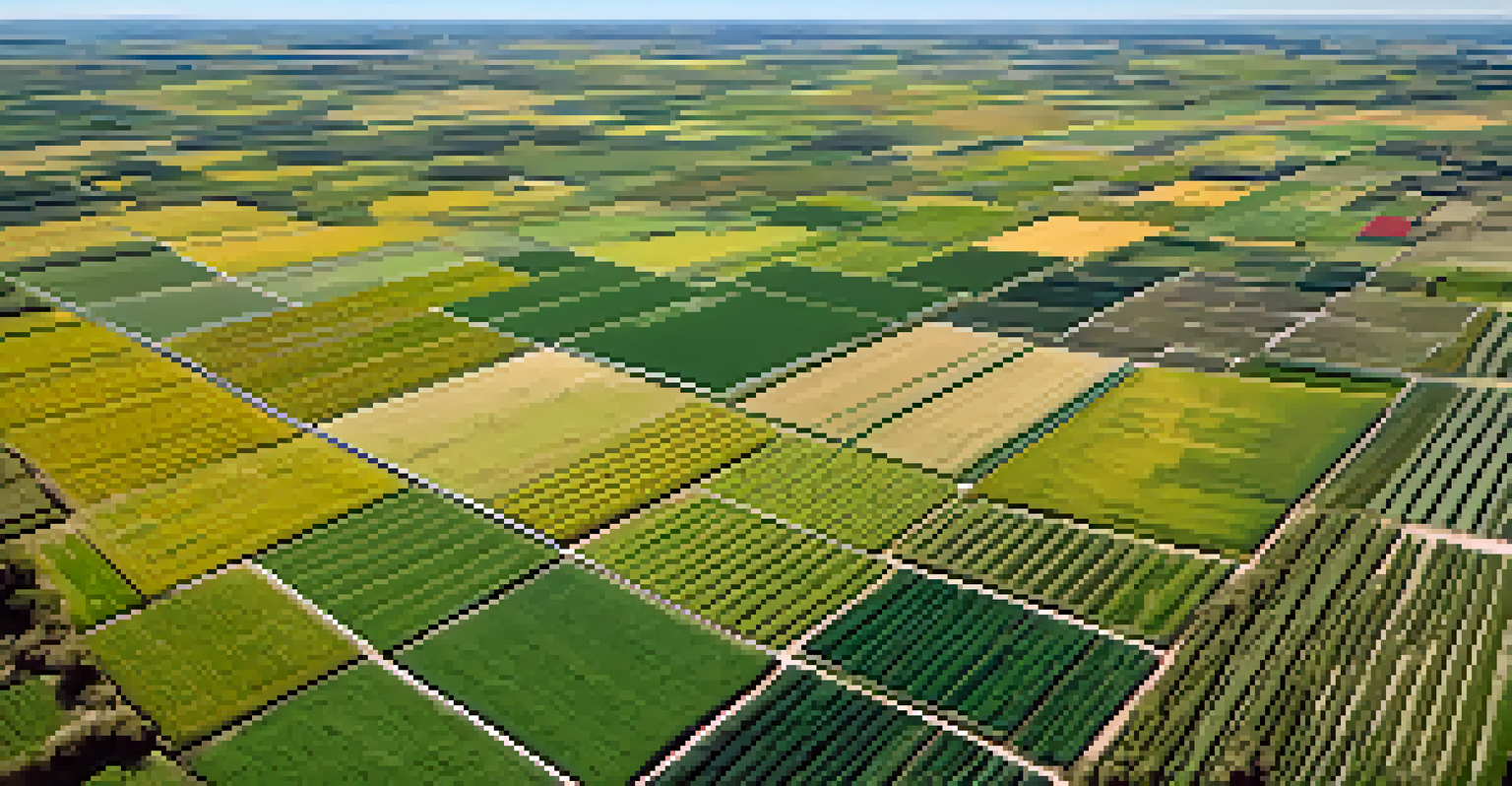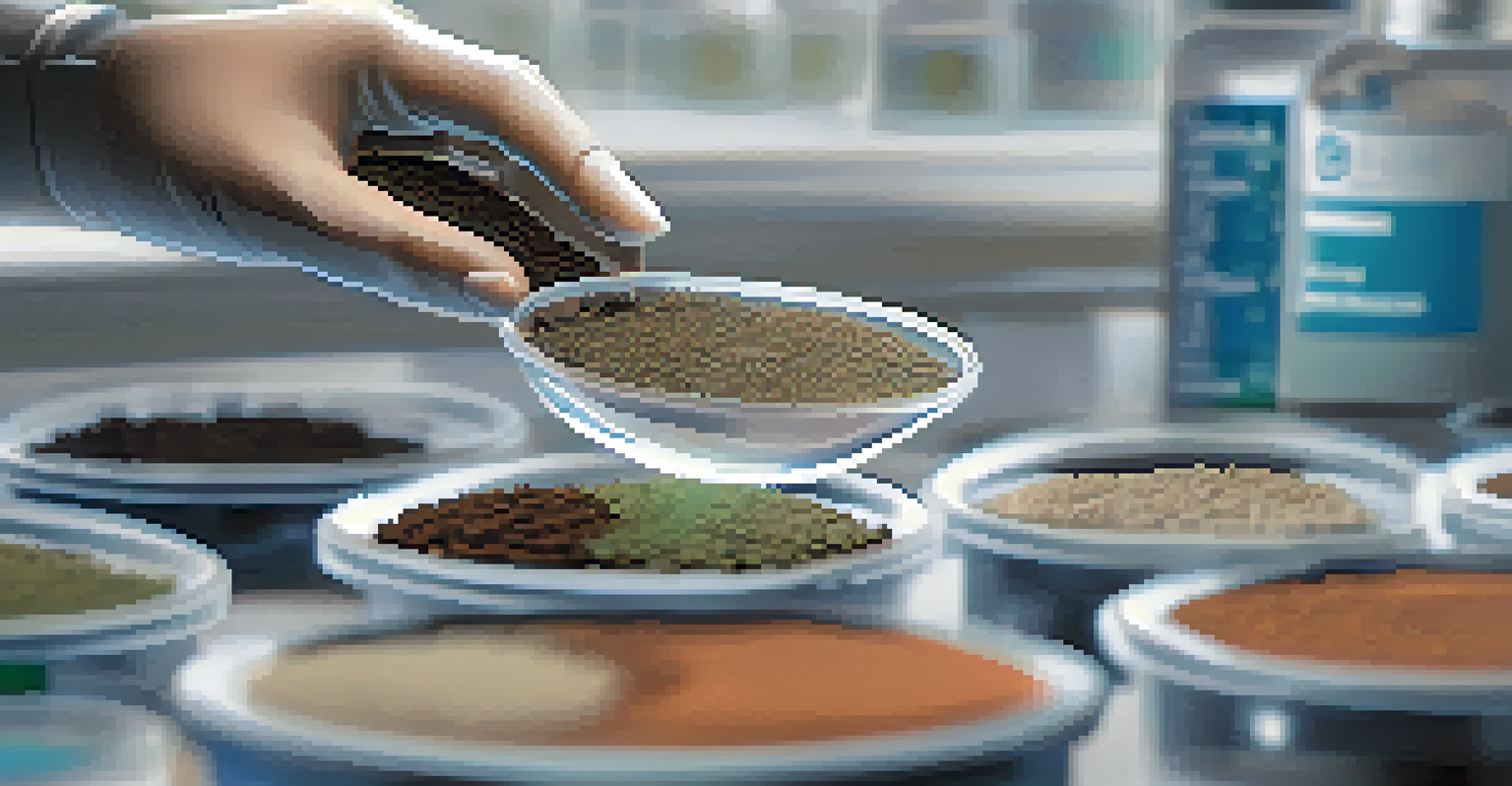Phenotyping Techniques for Identifying Resilient Plant Traits

Understanding Phenotyping in Plant Science
Phenotyping is the process of measuring and analyzing observable traits in plants. This can include everything from plant height to leaf color and even resistance to diseases. By understanding these traits, researchers can identify which plants might thrive in challenging environments, such as drought or poor soil conditions.
Plants are the foundation of our ecosystems, and understanding their traits is critical to our survival.
The importance of phenotyping lies in its ability to bridge the gap between genetics and the environment. It helps scientists determine how different plant varieties respond to various stressors. This knowledge is essential for developing crops that can withstand the increasingly unpredictable climate conditions we face today.
In essence, phenotyping provides a roadmap for plant breeders. It allows them to select the most resilient traits that can be passed down through generations, ultimately leading to stronger, more sustainable crops that can contribute to food security.
Traditional Phenotyping Techniques Explained
Traditional phenotyping methods often involve visual inspections and manual measurements. For instance, scientists might measure plant height or count the number of leaves. While these methods are straightforward, they can be time-consuming and subject to human error.

One common approach is to use field trials, where plants are grown under controlled conditions to observe their responses. This method allows researchers to see how plants behave in real-time, but it also requires significant resources and time. Additionally, the results can vary due to environmental factors, making it harder to draw consistent conclusions.
Phenotyping links traits to resilience
Phenotyping enables researchers to understand plant traits, aiding in the development of resilient crops for challenging environments.
Despite these challenges, traditional methods are foundational in plant science. They provide valuable baseline data that can be compared against more advanced techniques, ensuring a comprehensive understanding of plant resilience.
High-Throughput Phenotyping: A Game Changer
High-throughput phenotyping (HTP) is revolutionizing the way scientists study plant traits. By using automated systems and advanced imaging technologies, researchers can collect data on thousands of plants in a fraction of the time it takes with traditional methods. This efficiency opens up new avenues for research and discovery.
The greatest challenge of our time is to make agriculture sustainable in the face of climate change and food security.
With HTP, scientists can analyze traits such as growth rate, leaf area, and even water usage at a much larger scale. This data is often collected using drones or specialized cameras that capture detailed images of plant health. The result is a wealth of information that can be processed quickly, leading to faster conclusions.
Moreover, HTP allows for the identification of subtle traits that might go unnoticed in traditional studies. This increased sensitivity can be crucial for pinpointing the specific characteristics that contribute to a plant's resilience in challenging conditions.
Genomic Technologies: Linking Traits to Genes
Genomic technologies are making it possible to link phenotypic traits to the underlying genetic factors. Techniques like genome-wide association studies (GWAS) help researchers identify specific genes responsible for desirable traits. This connection is vital for breeding programs focused on improving resilience.
By understanding the genetic basis of traits, scientists can make more informed decisions about which plants to crossbreed. This targeted approach speeds up the process of developing resilient varieties. Rather than relying solely on trial and error, breeders can use data-driven insights to guide their efforts.
High-throughput phenotyping advances research
High-throughput phenotyping utilizes automated systems to efficiently analyze large numbers of plants, providing crucial data for plant resilience.
Incorporating genomic technologies into phenotyping enhances the precision of plant breeding. It allows for the selection of plants that not only exhibit desirable traits but also have the genetic potential to pass those traits on to future generations.
Remote Sensing: Monitoring Plant Health from Afar
Remote sensing is another innovative technique in the realm of phenotyping. By using satellites or aerial imagery, researchers can monitor vast areas of crops without the need for physical presence. This method provides a broader perspective on plant health and resilience across different landscapes.
The data collected through remote sensing can reveal patterns that are not easily observable on the ground. For instance, it can help identify regions within a field that are suffering from drought or pest infestations. This information is invaluable for making timely interventions to protect crops.
Furthermore, remote sensing allows for continuous monitoring, which is crucial in understanding how plants respond over time. This long-term data can help researchers develop predictive models for plant resilience, ultimately aiding in more sustainable agricultural practices.
Integrating Data: A Holistic Approach to Resilience
Integrating data from various phenotyping techniques provides a comprehensive view of plant resilience. By combining traditional methods, high-throughput phenotyping, genomic data, and remote sensing, researchers can create a more accurate picture of how plants respond to their environments. This holistic approach is essential for advancing our understanding of plant resilience.
Moreover, this integrated data can help identify key traits that contribute to resilience, enabling targeted breeding efforts. For example, if a specific trait is linked to drought resistance, breeders can focus on enhancing that trait in future crop varieties. This targeted strategy can lead to faster development of resilient plants.
Integrating data enhances breeding efforts
Combining various phenotyping techniques and genomic data offers a holistic view of plant resilience, guiding targeted breeding for improved crop varieties.
Ultimately, a holistic approach to data integration empowers scientists and breeders to make informed decisions. It fosters collaboration across disciplines and encourages the sharing of insights, leading to innovations in plant science that can benefit agriculture worldwide.
The Future of Phenotyping in Plant Resilience Research
The future of phenotyping holds exciting possibilities for plant resilience research. As technology continues to evolve, we can expect even more sophisticated tools and methods to emerge. These advancements will enable researchers to gather data more efficiently and analyze it with greater accuracy.
For instance, the integration of artificial intelligence (AI) in phenotyping could revolutionize data analysis. AI can identify patterns and correlations in large datasets that might be overlooked by human researchers. This capability could lead to faster breakthroughs in understanding plant traits and enhancing resilience.

As we face global challenges like climate change and food security, the role of phenotyping will only become more critical. By investing in and advancing these techniques, we can ensure that agriculture adapts to the changing world, providing resilient crops that can thrive under diverse conditions.